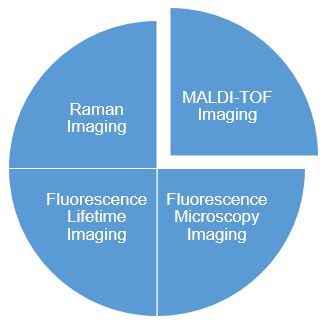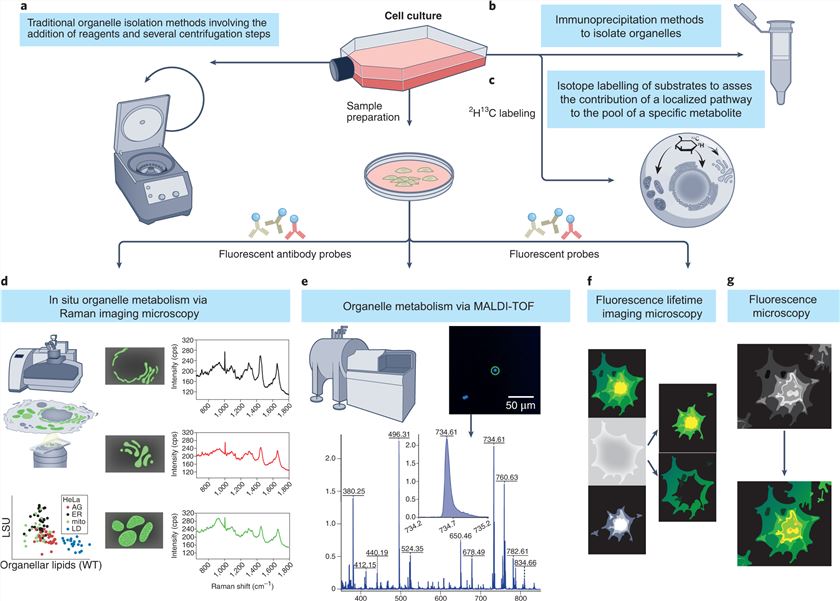Characterization of Tumor Metabolism in tumors is important for understanding tumor biology and for developing potential therapeutics. Cell compartmentalization gives rise to numerous advantages for the functioning of cellular metabolism. The microenvironment, which consists of a combination of metabolites and cofactors that enables the cell to perform any other thermodynamically specific reactions at once, shall be created by the separation of metabolism. Therefore, for a full understanding of cellular metabolism, it is necessary to shed light on compartmental metabolic processes. Cellular compartmentalization, particularly with regard to metabolism, presents an inherent advantage by providing a geographical mechanism for metabolic functions.
In contrast to the majority of studies which analyze average metabolite levels from all cell compartments, subcellular metabolomics provides detailed information about biochemical processes associated with this disease. Creative Biolabs has developed several efficient ways to identify metabolic pathways within organelles. Our state-of-the-art strategies include Raman imaging, MALDI-TOF imaging, fluorescence lifetime imaging (FLIM), and fluorescence microscopy imaging, which can monitor metabolism in situ. Our full portfolio ranges from organelle isolation to isotope tracing and analysis.

For the cancer research community, Raman spectroscopy technologies have several advantages. The Raman spectroscopy technique, the so-called Biomolecular Fingerprint for cellular and tissue metabolic processes, is particularly a spectroscopically unlabelled way of providing comprehensive information on biomolecules. Moreover, Raman imaging offers superior resolution at the nanocellular level and can perform an accurate noninvasive examination of lysable cells, tissues, or organisms based on their metabolism profile.
Since its introduction, there has been a marked increase in the use of MALDI-TOF imaging for biological studies. MALDI-TOF imaging has been making a significant contribution to the understanding of diseases, eye problems, cancer research, drug distribution, and neural science. MALDI-TOF imaging, which can distinguish between drugs and metabolites as well as give histological data to cancer research, is a promising tool for the discovery of new protein biomarkers. For research on organelle metabolism, MALDI-TOF Imaging shows great potential for the realization of metabolomic imaging.
FLIM is a noninvasive technique that maps the spatial resolution of labelless fluorescent imaging modalities to measure fluorescence degradation by fluorophores and may be useful for measuring the metabolic characteristics of living cancer cells. FLIM is therefore an alternative strategy for exploring subcellular structures at the nanoscale at Creative Biolabs.
In addition to the spatiotemporal resolution of metabolism, fluorescent microscopy can provide semiquantitative and quantitative information. Consequently, this technology was used as one of the most powerful tools for studying mitochondrial bioenergetics. Scientists at Creative Biolabs are proficient at using it as a useful tool for organelle metabolic research.
Journal: Nature Methods
IF: 48
Research Background: This review focuses on the isolation of key organelles through new approaches and isotope tracing strategies to monitor metabolism in cancer cells.
 Fig.1 Organelle preparation and analysis.1
Fig.1 Organelle preparation and analysis.1
Please contact us for more detailed information.
Reference
Ruiz-Rodado, Victor, Adrian Lita, and Mioara Larion. "Advances in measuring cancer cell metabolism with subcellular resolution." Nature Methods 19.9 (2022): 1048-1063.
For Research Use Only | Not For Clinical Use